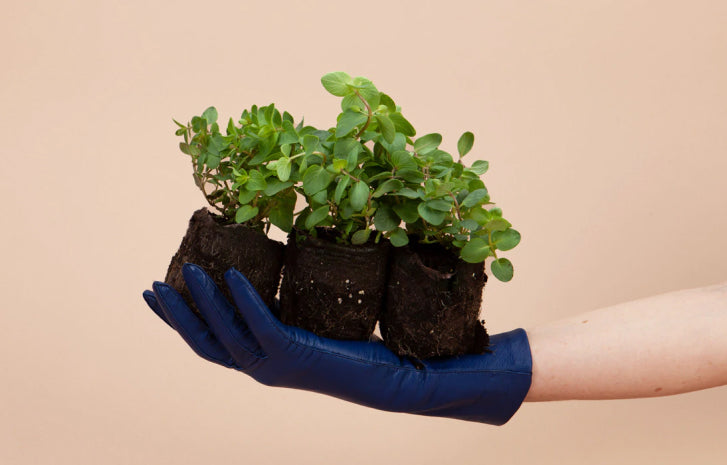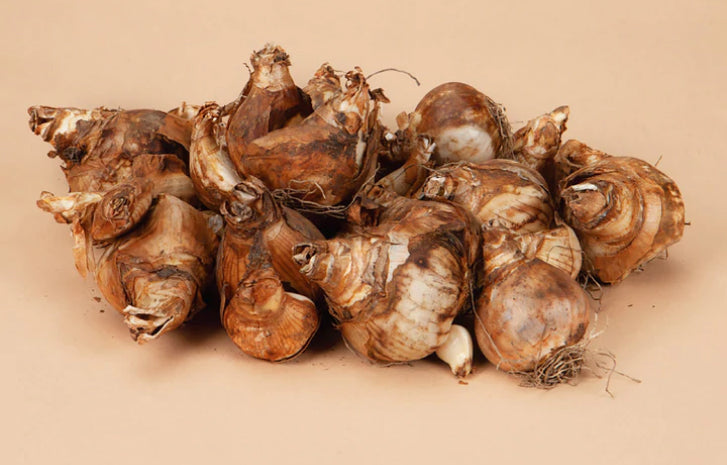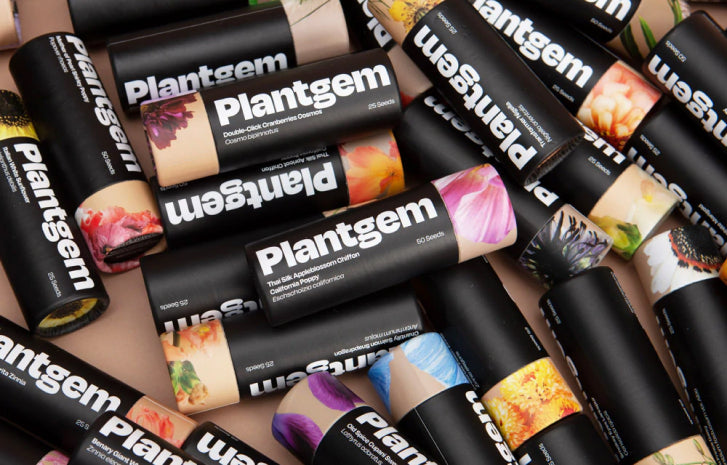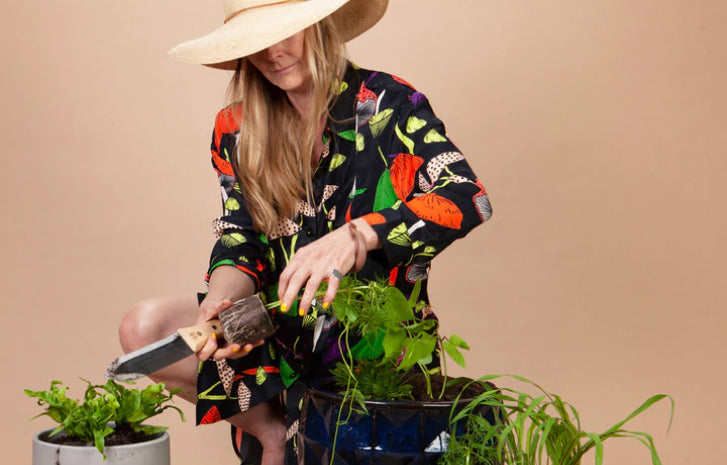Spring Plants

Description
| Height
|
Generally 2-4ft when full grown
|
| Spacing
|
9-12" between plants
|
| Light
|
Full sun or part shade
|
| Zone
|
Grows everywhere in the USA
|
| Shipping
|
Mid-April though end of May
|
| Includes
|
3 plants grown in 2.5" diameter pots |
Receiving and Planting
First and foremost: Open the box and take out your plants as soon as you get them. Then, open their green 3x plant packs all the way so that they lay flat, and stand your plants up in their little root ball spots. Water the root balls a bit if they are dry. If you are waiting to plant, note that they typically need a little drink every other day or so. (Just touch the root ball - if it's dry, water it. If it's wet, don't!) It's always best to plant your brave, road-weary plants as soon as possible, but giving them a breather after being in a box for two days is ok too. They'll be happy waiting in a semi-sunny spot in the corner of your kitchen until you're ready.
Hardening off is recommended if you are planting in an area that is still a bit cool. This means moving your plants out into the sun for a few hours a day, over 3-5 days, in order to to allow them to adjust to their new environment. They've grown up in a greenhouse in warm, sunny Florida. If it's cooler where you live, they might get shocked if planted directly outside, which would lead to drooping, leaf loss, etc. Just because the danger of a frost has passed, doesn't mean that your plants will be thrilled about suddenly being outside in chilly weather - you wouldn't either, right?
With that said, please note that after planting it is 100% common and expected for plants to look a bit haggard. Transplanting is an extreme event in a plant's life. Allow them up to a week to bounce back.
To plant: Dig a hole twice the size of the root ball. Fill a little bit of the loose dirt back into the hole and stick your plant in the hole so the base of the stem is even with the top of the hole. Now fill in the rest of the soil around the roots, give the soft ground around the base of your new plant friend a few solid pats to compress the soil onto the roots, and a long, gentle drink of water, taking care to not displace the soil. If soil sinks down exposing roots, add more soil and compress again.
Sun, Soil, Water
Most of our Spring Plants require 6+ hours of sunlight to grow and thrive. It you live in a particularly hot climate, afternoon shade will give them relief and prevent scorching and drooping.
If planting directly into the ground, we recommend fertilizing your plants every two weeks to add nutrients to the soil around them.
Finding a watering schedule that works for your garden is a personal experience - it depends on your soil, whether you are growing in containers or in the ground, wind, rain, humidity - everything is a factor. Here's what we recommend: check your soil daily by sticking your pointer finger all the way into the soil. (Yes, all the way.) If the soil is totally dry, water it. If the soil is moist or damp like a rung out sponge, don't water it. If the water is super wet, reel back on the watering.
If your soil continues to be wet after several days of not watering it (and even gets a little stinky) this is a sign of a drainage problem. This typically happens in containers, raised beds, or swampy land. Replanting your plants is the best option to save them. For containers, be sure to put a layer of rocks at the bottom so that the soil doesn't clog the drainage holes - and ALWAYS plant in pots with drainage holes.
Problem Solving
Air flow is a commonly under considered factor when planting. It can lead to fungus (the bad kind) and bug infestations (also the bad kind). Consider location when planting; up against the house or a fence, for instance, can hinder air flow. Allow extra space between plants if going that route. With that said, hot, dry, windy days can stress out plants, leading to fungus. Too much dampness and humidity can cause fungus too. (We know... it's tricky). If you see what looks like a film of white fuzz on your leaves, then treat with an anti-fungal spray as soon as possible. (If treated quickly, you can beat it.) We encourage you to do your own research to find a product that suits your level of chemical comfort. There are all kinds out there, and honestly, they all work fine.
Same goes with invasive bugs. We here at Plantgem try our hardest to avoid any insecticides in order to protect all pollinators. However, some bugs are bad, and measures need to be taken. If you see evidence of bug problems (abrupt leaf loss, holes in leaves, shriveling, yellowing, etc.) we recommend neem oil as the safest form of insecticide.
Japanese Beetles are the worst and if they are eating your flowers, please know that nothing will stop them but manually removing them. Beetle traps work best if you don't want to touch them.
If you've got critters eating your plants, Liquid Fence is the best possible solution for keeping them away. It smells absolutely vile, but when applied properly it really, truly works. It does not harm plants or animals. Read the full directions for any treatment you choose to apply to your plants. Seriously - avoid the mistake we've all made: Read. The. Directions.
In any case, feel free to reach out to us with photos of any problems you are facing. We'll be happy to have a look with you and figure out what's going on together.
Description
| Height
|
Generally 2-4ft when full grown
|
| Spacing
|
9-12" between plants
|
| Light
|
Full sun or part shade
|
| Zone
|
Grows everywhere in the USA
|
| Shipping
|
Mid-April though end of May
|
| Includes
|
3 plants grown in 2.5" diameter pots |



